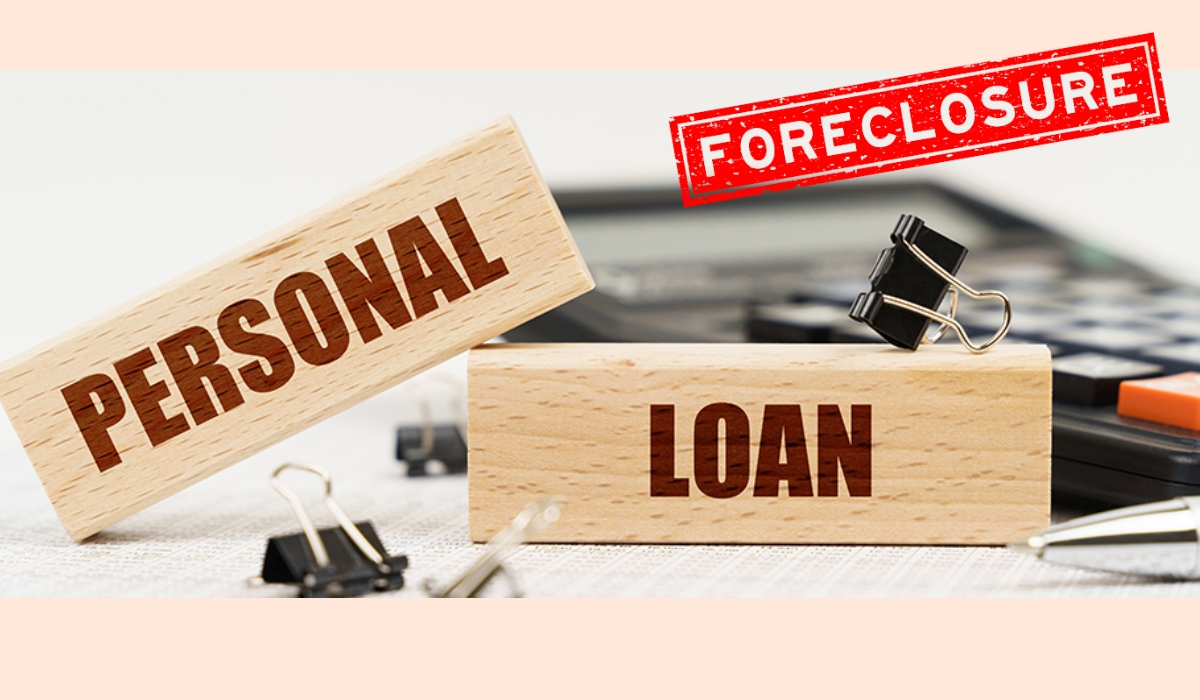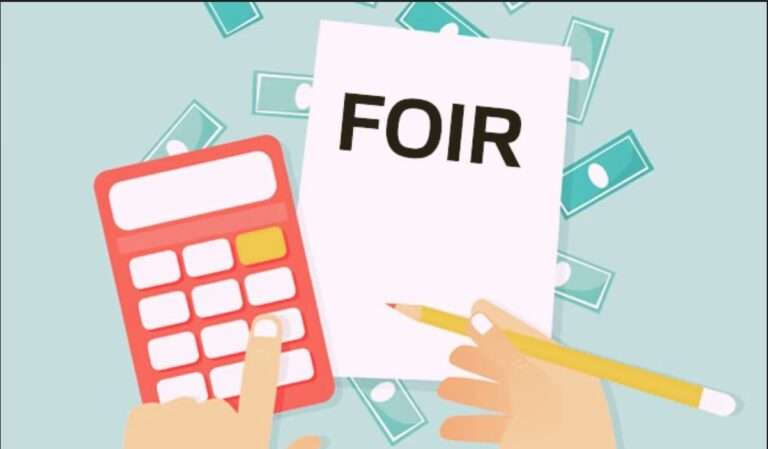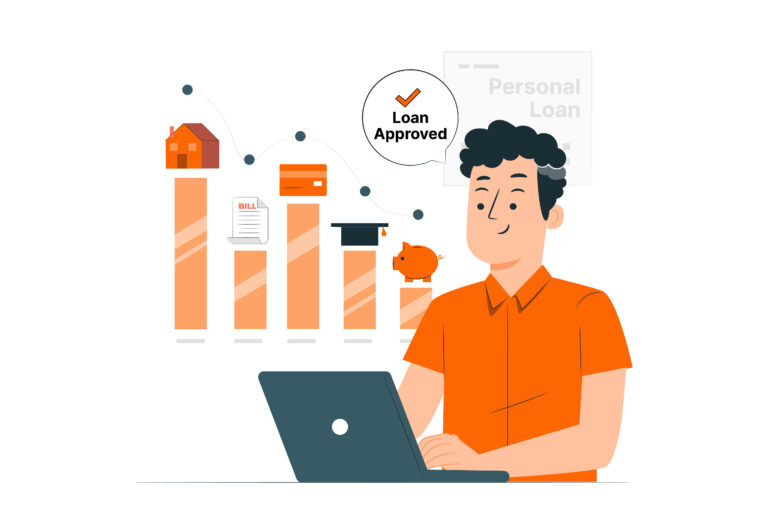Personal loans come in handy in a crisis when you are in dire need of money. With effective management of debts, you can easily manage your personal finances. One such method that helps in managing personal loans is foreclosure. This is one of the feasible methods that offers instant relief from EMI and also improves your CIBIL health. But what is personal loan foreclosure, and how does it work? The complete details about the foreclosure of personal loans are on this page.
What is Personal Loan Foreclosure?
Personal loan foreclosure refers to the complete repayment of a personal loan before the agreed tenure ends. This action eliminates the remaining debt and any future interest payments. The key difference between loan prepayment and foreclosure lies in the amount paid. Prepayment involves making partial payments to reduce the outstanding balance, while foreclosure means paying off the entire loan at once. Both options help borrowers manage their finances, but foreclosure provides immediate relief from monthly payments and debt.
How Does Personal Loan Foreclosure Work?
Personal loan foreclosure is a feasible option for getting debt-free while improving their financial health. Having an idea of the step wise steps helps to make informed decision:
- Step 1: Check Outstanding Loan Balance:
Review your loan agreement or contact your lender to determine the exact outstanding balance. This amount includes the principal and any accrued interest. Knowing this figure is essential for planning your foreclosure. - Step 2: Review Foreclosure Terms and Charges:
Examine the terms related to foreclosure in your loan agreement. Understand any applicable charges, which may range from 1% to 5% of the outstanding amount. This step helps you assess the financial implications of foreclosing your loan. - Step 3: Request Foreclosure Statement from the Lender:
Contact your lender to request a foreclosure statement. This document outlines the total amount required to settle the loan, including any applicable charges. Ensure you receive this statement in writing for your records. - Step 4: Make the Final Payment:
Once you have the foreclosure statement, arrange for the final payment. This payment should cover the outstanding balance along with any foreclosure charges. Ensure that the payment method is secure and that you keep a receipt for your records. - Step 5: Obtain a Loan Closure Certificate:
After making the final payment, request a loan closure certificate from your lender. This document serves as proof that you have fully repaid the loan and that the account is closed. Keep this certificate safe, as it may be required for future financial transactions or credit applications.
Advantages of Foreclosing a Personal Loan
Foreclosing a personal loan has its advantages that have made it a feasible option amongst borrowers. Read on to know more:
- Saves on Interest Payments:
Foreclosing a personal loan eliminates future interest payments, resulting in significant savings. For example, if you have a ₹1,00,000 loan with an interest rate of 12% over five years, paying it off early saves thousands in interest costs. - Reduces Financial Burden:
Paying off a personal loan early reduces financial stress. Without monthly payments, you gain peace of mind and increased disposable income. This relief allows you to allocate funds toward savings, investments, or other essential expenses, enhancing your overall financial stability. - Improves Debt-to-Income Ratio:
Foreclosing a personal loan improves your debt-to-income ratio, a key factor lenders assess when evaluating creditworthiness. A lower ratio indicates better financial health, making it easier to qualify for future loans or credit cards with favorable terms and interest rates. - Frees Up Credit for Future Borrowing:
By foreclosing a personal loan, you free up your credit capacity for future borrowing. This action enhances your credit profile, allowing you to access additional funds when needed. Improved credit availability supports financial flexibility for emergencies or significant purchases.
Disadvantages of Personal Loan Foreclosure
- High Foreclosure Charges
Foreclosure charges on personal loans often reach up to 5% of the outstanding loan amount. For instance, if you have a ₹1,00,000 loan, a 5% charge results in a ₹5,000 fee. This additional cost reduces the financial benefits of early repayment.
- Impact on Credit Score
Foreclosing a personal loan may lead to a temporary decline in your credit score. This occurs because closing an account reduces your overall credit history length and available credit. A lower score can affect future loan applications and interest rates.
- Potential Liquidity Issues
Using funds to foreclose a personal loan may create liquidity problems. If you allocate a significant amount of savings for foreclosure, you might face cash flow challenges for emergencies or other expenses. Maintaining a balance between debt repayment and liquidity is crucial.
Personal Loan Foreclosure Charges by Banks
Learn about the personal loan foreclosure charges by banks in the table below:
|
Bank Name |
Foreclosure Charges |
|
SBI |
3% on principal outstanding |
|
HDFC Bank |
4% after 12 months |
|
ICICI Bank |
5% of the outstanding amount |
|
Axis Bank |
2% to 5% |
| Yes Bank |
2% to 4% |
|
Citi Bank |
4%+GST |
| Kotak Mahindra Bank |
5% + Service Tax |
(Note: Charges may vary; always check with the lender.)
Does Foreclosing a Personal Loan Affect Your Credit Score?
Yes, foreclosing a personal loan affects your credit score in India. When you close a credit account, it leads to a temporary dip in your CIBIL score due to the sudden reduction in your available credit.
For example, if you foreclose a personal loan with a major Indian bank, the closure reflects on your credit report, which impacts your score. However, there are long-term benefits to consider. By eliminating the loan, you lower your debt-to-income ratio, which improves your overall creditworthiness.
Loan Foreclosure vs. Prepayment: Which Is Better?
In foreclosure, one pays off the entire loan amount before the tenure ends. While it eliminates monthly payments and debt, banks often impose a foreclosure charge. It typically ranges from 2% to 5% of the outstanding principal. For instance, if you have a ₹1,00,000 loan and the charge is 3%, you would pay ₹3,000 as a fee.
Contrary to this, prepayment allows you to make partial payments towards your loan. It reduces the outstanding amount and future interest payments. Prepayment charges are generally lower, often around 2% to 4% of the outstanding principal, depending on the bank and the loan tenure. For example, if you prepay ₹50,000 on a loan with a 4% charge, you will incur a fee of ₹2,000.
With this, foreclosure offers complete debt relief, while prepayment helps manage payments and reduces interest over time. Also, foreclosure charges are usually higher than prepayment charges, making prepayment a more economical option for many borrowers.
Tips to Avoid High Foreclosure Charges
Here are some quick tips that will help you avoid foreclosure charges:
- Opt for lenders that offer low or zero foreclosure fees. This helps to reduce costs when you decide to pay off your loan early.
- Familiarize yourself with the terms and conditions, especially regarding prepayment penalties. This knowledge helps you avoid unexpected charges.
- Many loans have a lock-in period during which foreclosure charges are higher. Waiting until this period ends can save you money.
- Don’t hesitate to discuss your situation with your lender. They may be willing to lower the foreclosure charges, especially if you have a good repayment history.
- Use online tools to assess whether the savings from foreclosure outweigh the charges.
Conclusion
In summary, personal loan foreclosure offers quick debt elimination and potential savings but may involve high fees and a temporary credit score dip. Before deciding, calculate the costs and benefits carefully. Consider consulting a financial advisor for tailored advice. For easy loan management, explore PayMe today!
FAQs
- What is personal loan foreclosure?
Personal loan foreclosure happens when a borrower fails to repay the loan, leading the lender to take legal action to recover the owed amount. It’s a serious financial situation.
- Is foreclosure of a personal loan good or bad?
Foreclosure of a personal loan is generally bad. It can lead to loss of assets, legal troubles, and long-term financial stress.
- How much are foreclosure charges on personal loans?
Foreclosure charges on personal loans vary by lender but typically range from 1% to 5% of the outstanding loan amount. Always check your loan agreement for specific details.
- Does loan foreclosure affect credit scores?
Yes, loan foreclosure significantly impacts credit scores. It can lower your score by several points, making it harder to secure future loans or credit.
Also Read,
- What is the Maximum and Minimum Tenure for Personal Loan?
- How to get an Instant Small Cash Loan on Aadhaar Card?
- Personal Loan Preclosure Procedure
This post is also available in: हिन्दी (Hindi)




